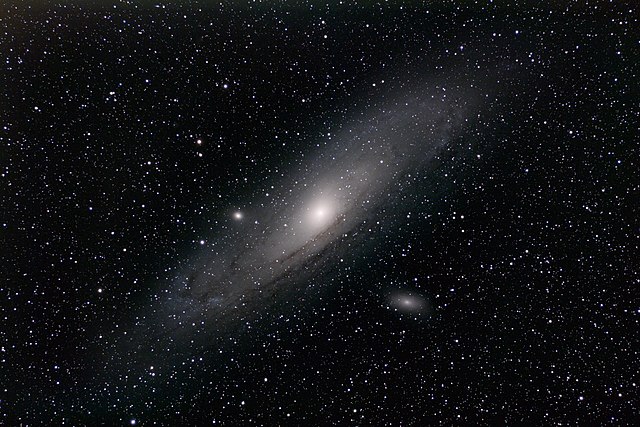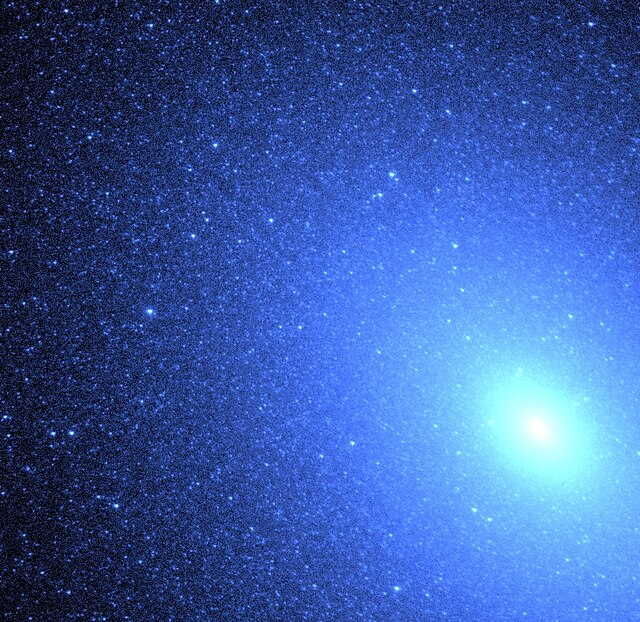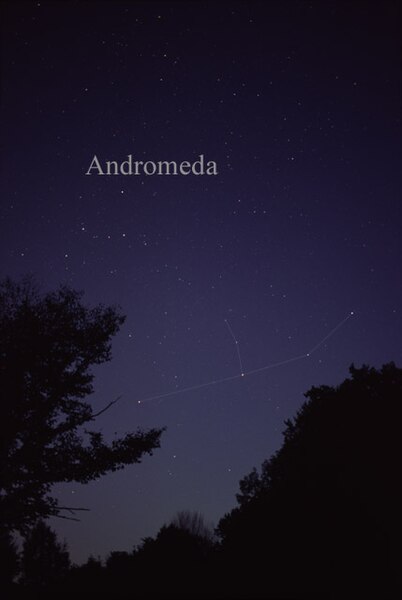Messier 32 is a dwarf "early-type" galaxy about 2,650,000 light-years (810,000 pc) from the Solar System, appearing in the constellation Andromeda. M32 is a satellite galaxy of the Andromeda Galaxy (M31) and was discovered by Guillaume Le Gentil in 1749.
Dwarf Satellite Galaxy Messier 32
In this image of the Andromeda Galaxy, Messier 32 is to the left of the center.
Hubble image of Messier 32 showing resolved central region.
Andromeda (constellation)
Andromeda is one of the 48 constellations listed by the 2nd-century Greco-Roman astronomer Ptolemy, and one of the 88 modern constellations. Located in the northern celestial hemisphere, it is named for Andromeda, daughter of Cassiopeia, in the Greek myth, who was chained to a rock to be eaten by the sea monster Cetus. Andromeda is most prominent during autumn evenings in the Northern Hemisphere, along with several other constellations named for characters in the Perseus myth. Because of its northern declination, Andromeda is visible only north of 40° south latitude; for observers farther south, it lies below the horizon. It is one of the largest constellations, with an area of 722 square degrees. This is over 1,400 times the size of the full moon, 55% of the size of the largest constellation, Hydra, and over 10 times the size of the smallest constellation, Crux.

Andromeda as depicted in Urania's Mirror, a set of constellation cards published in London c. 1825, showing the constellation from the inside of the celestial sphere
Photo of the constellation Andromeda, as it appears to the naked eye. Lines have been added for clarity.
M31, the Great Galaxy of Andromeda.
Sharp view of the Andromeda Galaxy







